7 Tips You Can Use to Optimize Sales Engagement Queue and Workflow [With Examples]
![7 Tips You Can Use to Optimize Sales Engagement Queue and Workflow [With Examples]](https://webimages.zixflow.com/653a3fa40de91186b1f96c53_Optimize_20_Sales_20_Engagement_20_Queue_20and_20_Workflow_09e163bf39.png)
Every minute counts in the dynamic sales world, where time is money and customer relationships are paramount.
As a sales professional, I hope you understand the exhilarating rush of closing deals and the relentless pursuit of achieving your targets.
In the bustling realm of sales, where every phone call could be a game-changing opportunity and every email holds the potential for a lucrative deal, there exists a secret weapon that separates the victors from the vanquished.
Can you guess it?
It is not a fancy gadget or a shiny new software; it is the art of optimizing the sales engagement queue and workflow.
Here, we embark on a journey—a journey to discover the art of optimizing the sales engagement queue and workflow. From ancient techniques passed down through generations of sales warriors to cutting-edge strategies forged in the crucible of modern business, these seven tips will be your guiding light.
In this blog, we will dive deep into the art and science of crafting an efficient sales engagement queue and workflow that will also help you improve your sales process.
We will explore seven strategies, time-tested techniques, and valuable tips to empower you to close more deals, build stronger customer relationships, and achieve your sales objectives with finesse.
So gather your wits and ready your quill as we unveil the seven enigmatic tips that will forever change the way you approach your sales engagement queue and workflow.
Are you prepared to walk this extraordinary path?
Then, let us commence our odyssey into the heart of sales optimization.
What is the sales engagement queue?
Imagine a bustling call center where numerous sales representatives are working simultaneously. Each representative has a list of potential leads lying in different sales stages they need to engage with—these leads could be potential customers or interested prospects.
The sales engagement queue refers to the organized list of these leads, often managed through a sales CRM (Customer Relationship Management) system, that sales representatives follow to prioritize and engage with each lead.
To simplify, think of the sales engagement queue as a to-do list for sales representatives. It helps them keep track of who they need to contact, when to contact them, and what actions they should take for each lead. The queue ensures that sales representatives stay focused, organized, and don't miss out on valuable opportunities.
What is the sales engagement workflow?
Now, let's move on to the sales workflow, which is the step-by-step process or series of actions that sales representatives follow to move a lead through the sales cycle. It involves a set of defined tasks and activities that sales professionals undertake to nurture leads at each stage of the pipeline convert a lead into a paying customer.
The sales workflow typically includes activities like prospecting, qualifying leads using sales qualifying questions, conducting sales presentations or demos, negotiating deals, and closing sales. It outlines the specific actions that need to be taken at each stage of the sales process, ensuring a structured and efficient approach to sales.
Tips to optimize sales engagement queue and workflow
Look at these seven actionable tips that will help you supercharge your sales engagement process. From organizing your queue to streamlining your workflow, these tips are designed to enhance productivity, maximize efficiency, and ultimately boost your sales performance.
Define and prioritize sales activities
By defining and prioritizing sales activities, you ensure that your focus is on the most valuable opportunities and time-sensitive tasks.
This optimization helps you manage your sales engagement queue and workflow effectively, leading to good sales time management, increased sales effectiveness and better overall results.
Now, how can you define or prioritize sales activities?
Define sales activities
Define all sales activities by following these quick steps:
Identify key sales activities
Start by identifying the specific sales activities most crucial for achieving your goals. These may include prospecting, lead qualification, product demonstrations, proposal creation, negotiation, customer centric selling, and closing deals.
Using the sales dashboard, you can get all the sales activities listed on one platform.
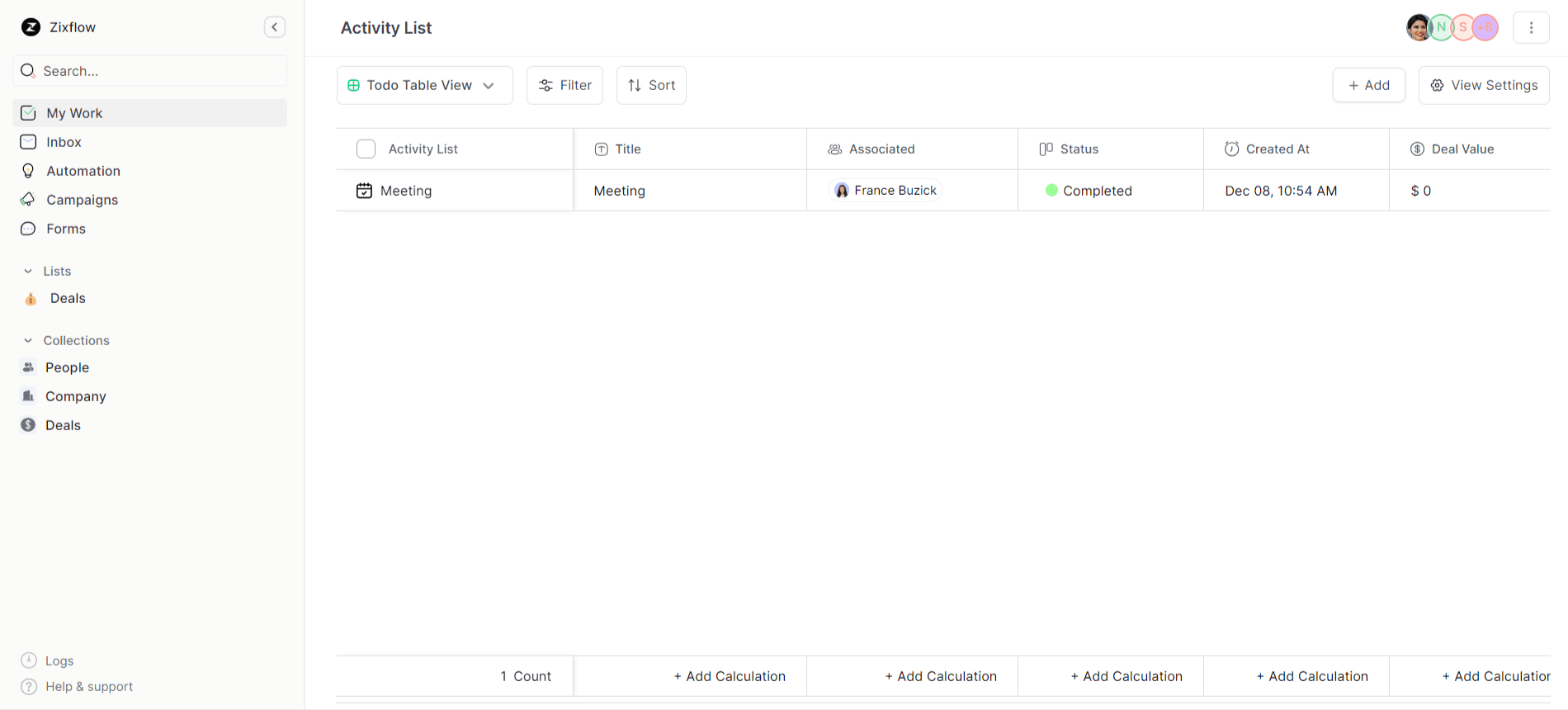
Understand the buyer's journey
Gain a deep understanding of the buyer's journey in your industry. This will help you map out the necessary activities at each stage, such as building awareness, nurturing leads through various tools, and converting them into customers.
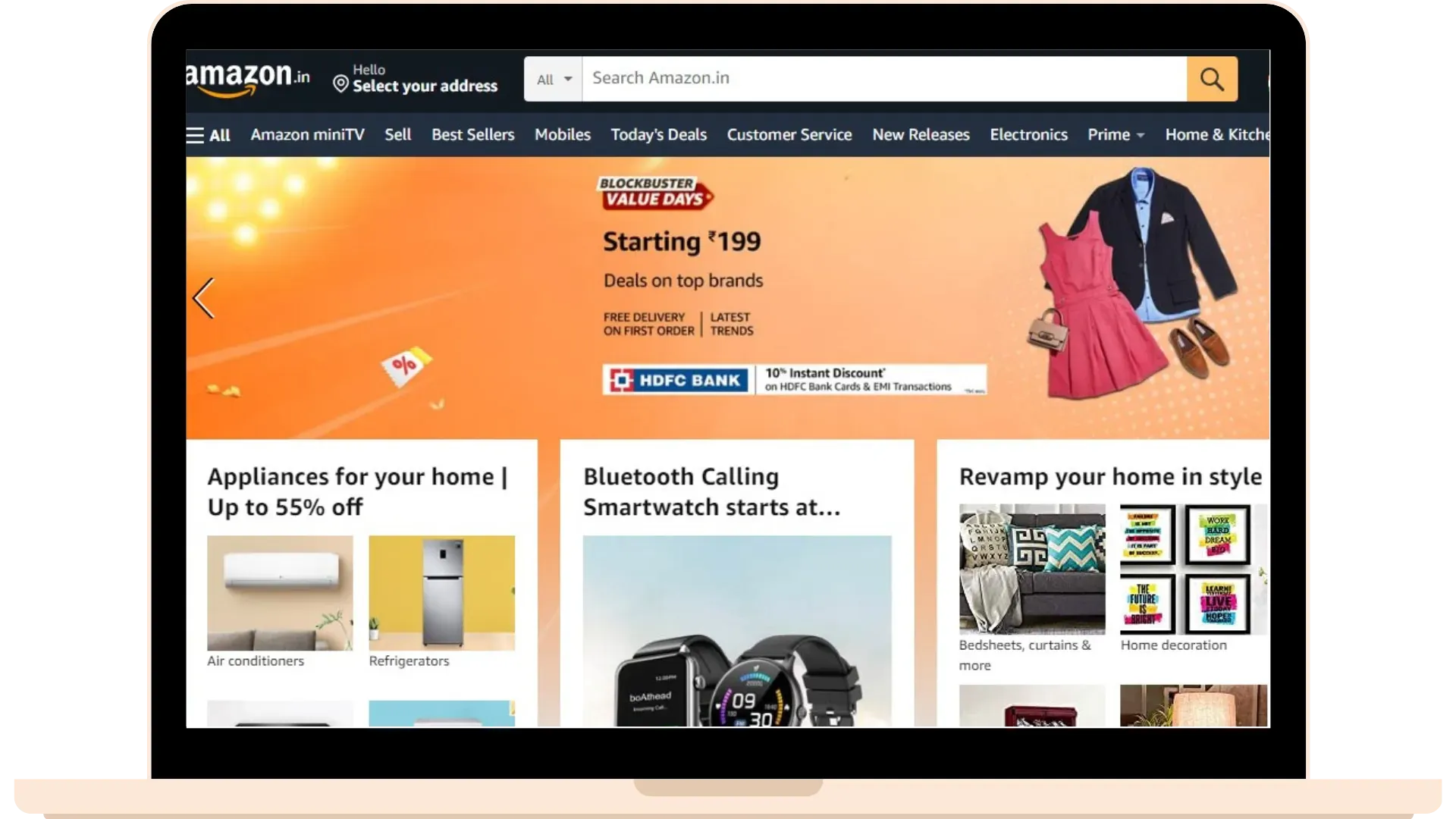
Align activities with objectives
Ensure that each sales activity aligns with your overall sales objectives.
For example, activities like upselling or cross-selling should be prioritized if your goal is to increase revenue from existing customers.
Prioritize sales activities
Evaluate potential impact
Assess the potential impact of each sales activity on your sales goals. Consider factors such as the likelihood of closing a deal, the revenue potential, and the time required to complete a customer-centric selling.
Focus on high-value opportunities
Prioritize activities that are likely to generate the highest value for your business.
For instance, if a lead represents a significant deal size or is from a critical target account, prioritize engaging with them over other lower-potential leads.
Consider urgency and deadlines
Take into account any time-sensitive activities or deadlines. For instance, if a potential customer has shown interest in a time-sensitive promotion, it is essential to promptly follow up with them to take advantage of the opportunity.
To ensure proper follow-ups and for not missing any deadline, you can automate your client's follow-up schedule with the Zixflow’s workflow automation for sales activities and sales cadence platform.
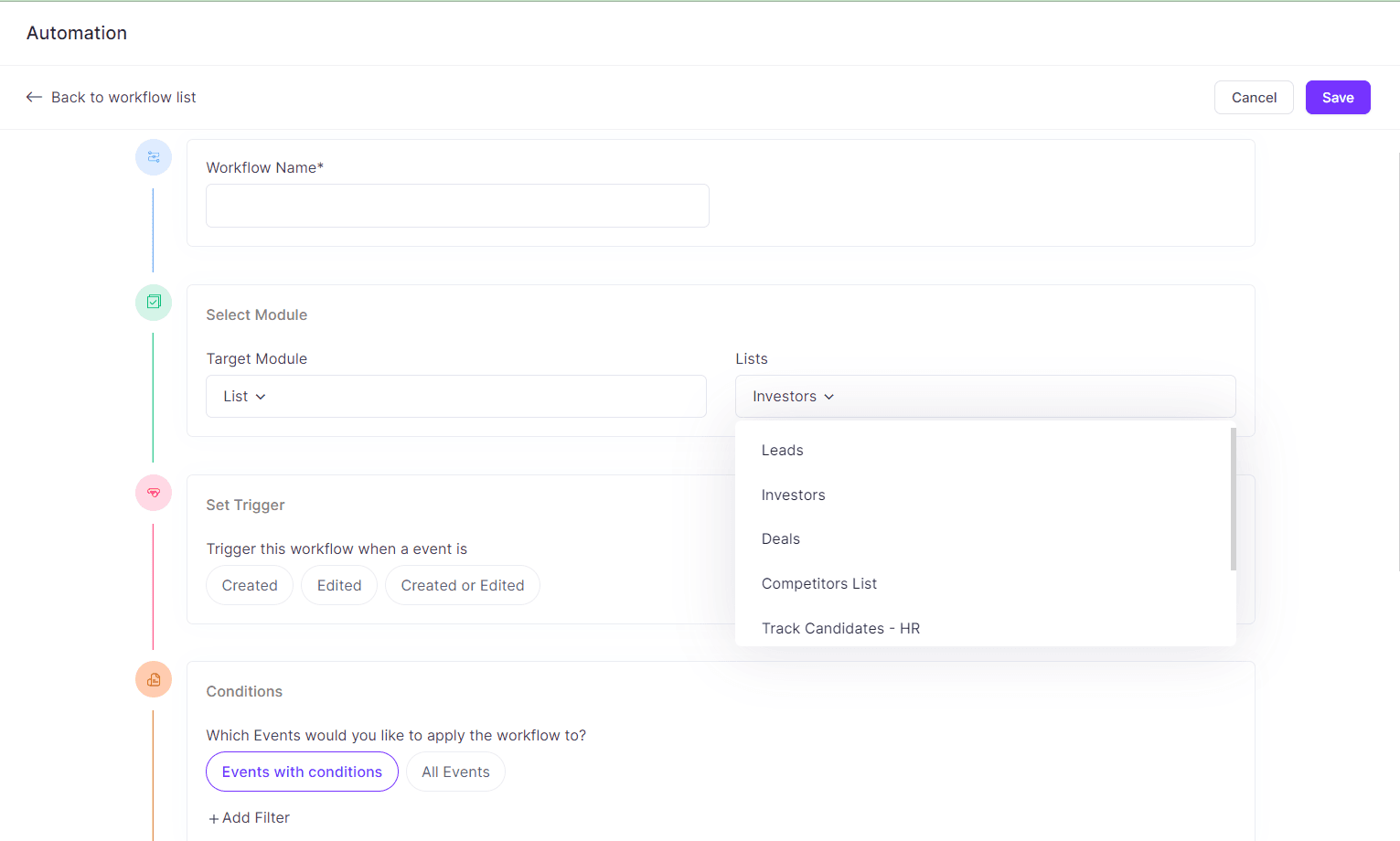
Implement a CRM system
A Customer Relationship Management (CRM) system is a centralized platform that enables businesses to manage and track interactions with customers, leads, and prospects. Remember that a CRM is different from a sales engagement platform.
Here are a few ways a CRM system can help optimize the sales engagement queue and workflow:
Lead management
When a prospect is added to the CRM, it can automatically be assigned to the appropriate sales representative based on predefined criteria or routing rules. This ensures leads are distributed evenly and reduces the chances of them getting lost or overlooked.
Example: On the Zixflow demo bookings page, we use Meeting Scheduler which allows interested prospects to schedule a demo with our expert team. When a person signs up for a demo on the Zixflow website, expressing interest in the product, it automatically gets added as a lead in CRM as well.
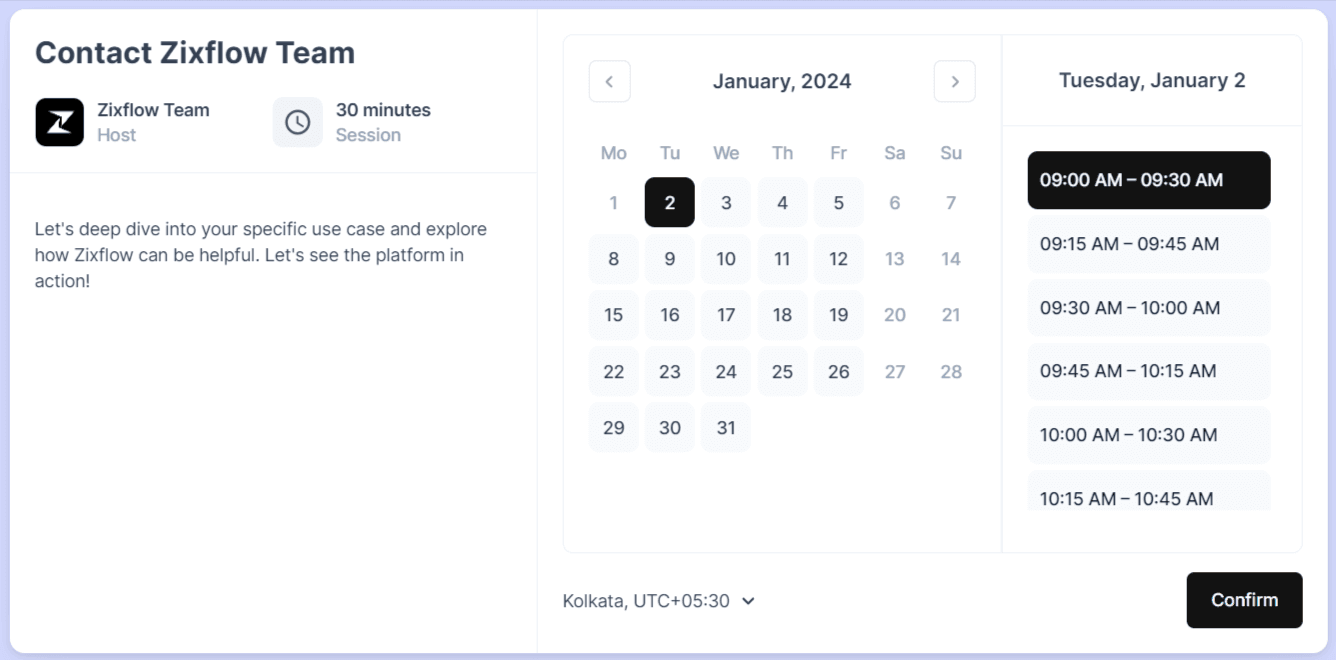
The CRM system can automatically create a lead record, assign it to a sales representative, and notify them to follow up. This streamlines the lead management process and ensures timely engagement. All thanks to Zixflow automation!
Sales pipeline visibility
A CRM system provides visibility into the various stages of the sales pipeline, allowing sales managers to track the progress of deals and identify bottlenecks. By clearly understanding where each opportunity stands in the sales process, sales teams can prioritize their activities and focus on contracts that are most likely to close.
For example, with a CRM system for sales pipeline management, you can quickly generate reports and dashboards that show the status of all ongoing deals. As a result, you can identify sales that have been stagnant in the pipeline for too long and take appropriate actions to re-engage the prospects or reallocate resources.
Automate repetitive tasks
Automating repetitive tasks can significantly optimize your sales engagement queue and workflow, allowing you to focus on high-value activities and improving overall sales productivity.
Discover several ways to streamline various sales engagement tasks with automation.
Email outreach
Use email automation tools like Zixflow Email Campaigns to create email templates and sequences for prospecting, follow-ups, and nurturing campaigns. It also allows triggers based on actions or time intervals, enabling personalized emails to send to leads quickly. This saves time and ensures consistent communication.
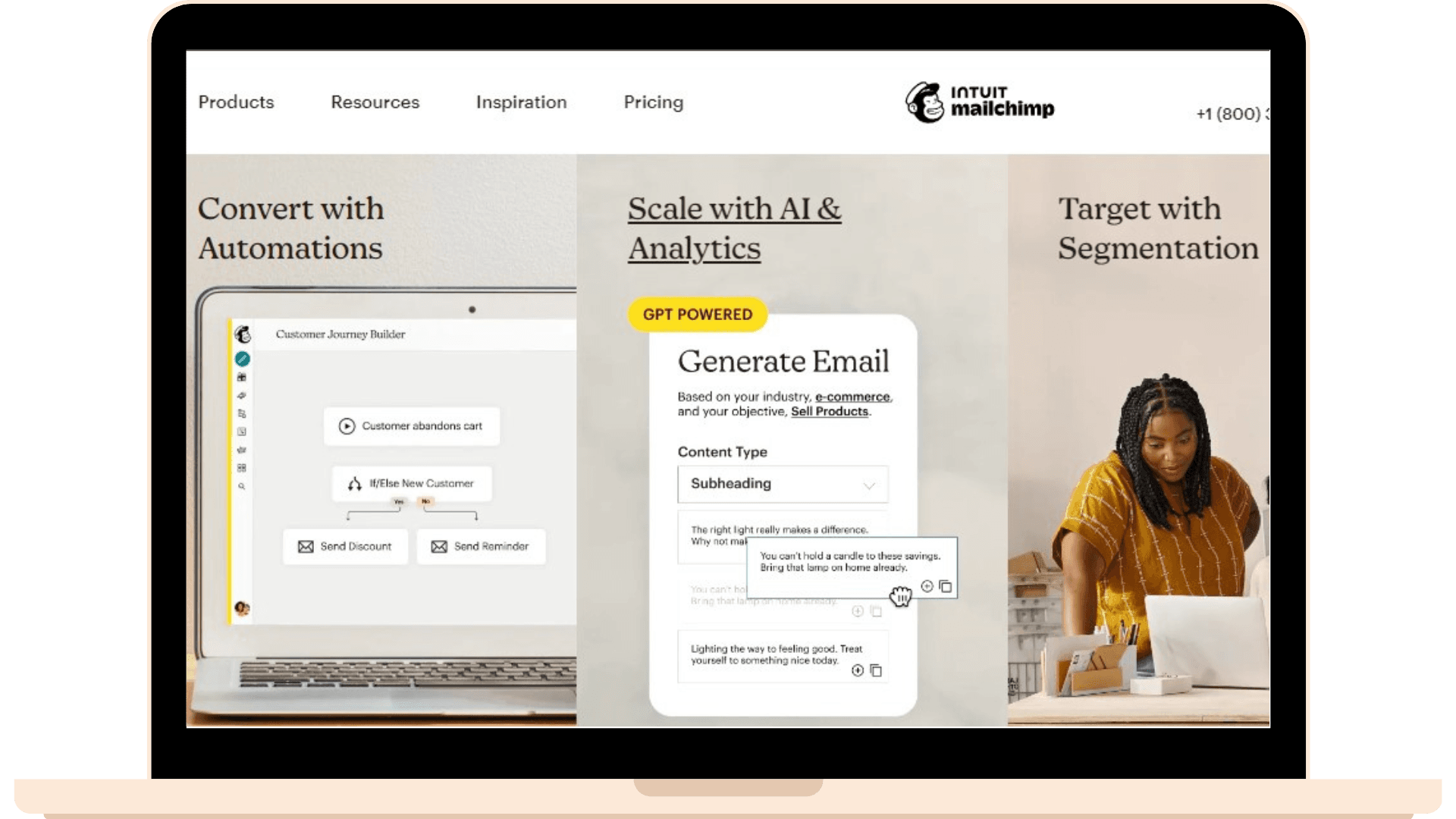
Meeting scheduling
Utilize meeting scheduling tools like Zixflow Meeting Scheduler to automate scheduling sales meetings. By sharing your availability and allowing prospects to book appointments directly from your calendar, you eliminate the back-and-forth emails and save time in coordinating meetings.
Social media engagement
Take advantage of social media management and other sales engagement tools like Zixflow or Hootsuite to get the most out of social media. These tools can help you automate and schedule your posts across multiple platforms. As a result, you can plan and create content in advance, ensuring a consistent social media presence and freeing up time for more direct sales activities.
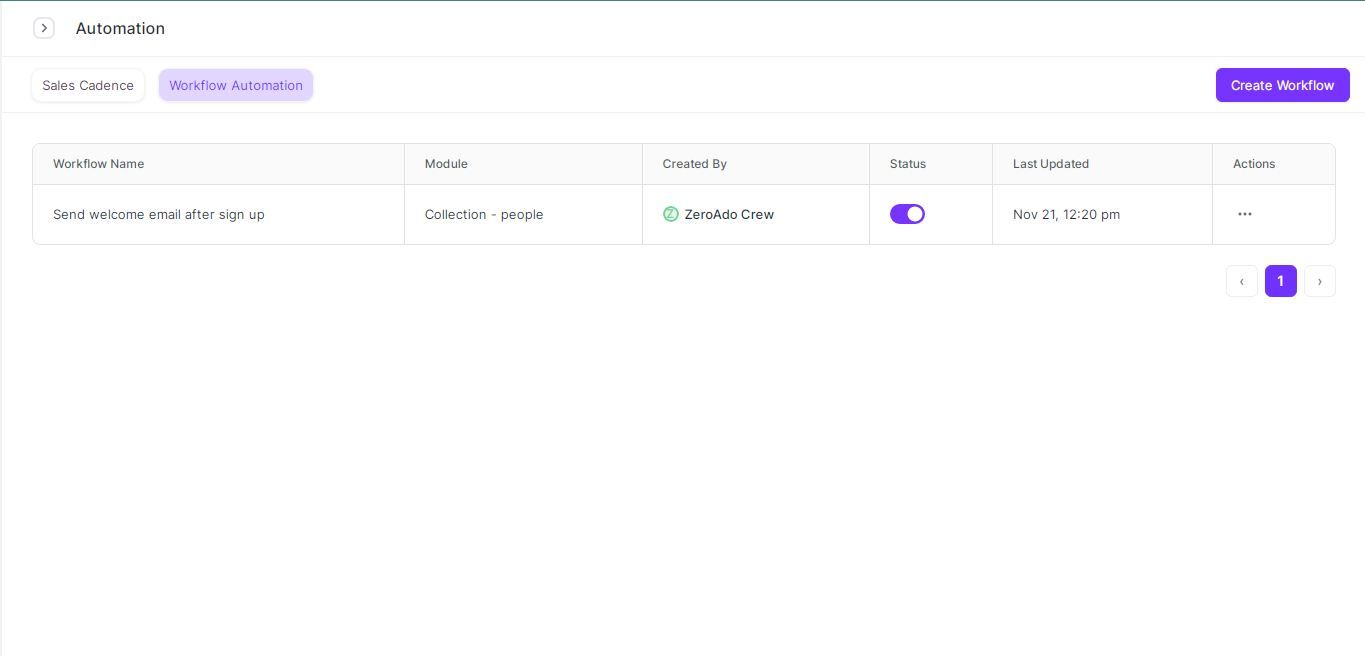
Remember that automation should enhance your efforts, not replace genuine human interaction, so always prioritize personalization and relationship building in your sales approach.
Enable collaboration and communication
Salespeople can benefit from shared knowledge, real-time updates, and collaborative problem-solving by enabling collaboration and communication within a sales team. This optimizes the sales engagement queue and workflow, improving sales performance and increasing efficiency.
Establish a centralized communication platform
Implement a centralized communication platform where your team can collaborate, share information, and discuss sales opportunities.
This platform could be a project management tool, or a complete SalesOS like Zixflow, or a team collaboration tool like Slack or Microsoft Teams.
Share real-time updates
Encourage your sales team members to provide real-time updates on their activities, progress, and challenges. This enables others to stay informed and offer assistance or insights when needed. In addition, it will assist you in effectively managing your sales pipeline.
For instance, you just had a productive meeting with a prospect and updated the sales engagement queue in the CRM system regarding the conference. This triggers a notification to the rest of the team, allowing them to see the latest developments and adjust their actions accordingly.
Foster collaboration through feedback loops
Establish feedback loops within the team, where members can provide input, suggestions, and feedback on each other's sales engagements. This helps refine strategies, identify improvement areas, and share best practices.
Understand more about the feedback loop through this video.
Leverage data and analytics
Data and analytics can improve sales engagement by focusing on valuable prospects and achieving sales goals.
If you're unsure about how to utilize data analytics, this guide will provide you with helpful information:
Collect data
Begin by collecting relevant data throughout the sales cycle. This data can include customer demographics, interactions, purchasing history, engagement metrics, and other relevant information. Then, ensure that your CRM (Customer Relationship Management) system effectively captures and stores this data.
Analyze historical data
Analyze the historical sales data to uncover patterns, trends, and insights. Look for correlations between specific actions or events and successful outcomes.
For example, leads who engage with a specific type of content are more likely to convert. This analysis will help you identify best practices and areas for improvement.
Most CRM tools now have built-in analytics that you can leverage for optimizing sales engagement. Additionally, you can also use embedded analytics tools to combine data from other sources and make it easy for yourself and your team to go through analytics in the form of visual charts and automated insights.
Build predictive models
Utilize predictive analytics techniques to develop models that can forecast future sales outcomes. These models can provide insights into lead scoring, identifying the most promising prospects, and predicting the likelihood of a deal closing. You can optimize your sales engagement queue by prioritizing leads based on their predicted conversion probability.
Provide sales training and coaching
Every salesperson sells different products in a different way. Therefore, you should provide sales training and coaching to various members of your sales team so that they are updated with recent trends and are able to use the CRM software.
Adopt these suggestions to train your sales team:
Develop training materials
Create comprehensive training materials that cover the key areas of your sales engagement model. This could include sales scripts, objection-handling techniques, negotiation strategies, and effective communication skills. Incorporate best practices and industry-specific knowledge into the training materials.
Conduct training sessions
Schedule training sessions with your sales team to deliver the training materials. The sessions can happen face-to-face, online, or a mix of both.
Different training methods like presentations, role-plays, case studies, and discussions help participants learn and retain information.
Continuously refine and improve
Continually refine and improve your sales engagement queue and workflow to increase efficiency, higher conversion rates, and better overall sales performance.
Remember to regularly reassess your sales engagement strategies and adapt them as needed to stay ahead in a dynamic sales environment.
Implement a culture of experimentation and continuous testing. Test different approaches, strategies, and tools to refine your sales engagement process. For example, use A/B testing to compare different versions of emails, call scripts, or landing pages. Gather data and feedback to inform your decision-making and iterate on your strategies.
Make use of various resources available on the internet such as books and podcasts on sales engagement, publication, newsletters, etc. Also, keep up with industry trends, market dynamics, and changes in customer behavior. Be adaptable and willing to adjust your sales engagement queue and workflow to align with evolving needs and don’t forget to put a modern sales tool in action. Finally, embrace new technologies and innovative approaches to enhance your sales process. If you do it all, be assured that you will not just hit your sales goals but will exceed them.
